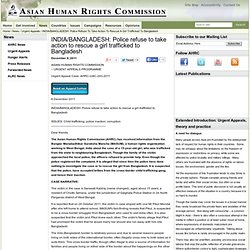

Forced Labor Generates $150 Billion Each Year. Nearly 21 million people around the world are victims of forced labor, human trafficking and slavery, and the illegal profits from it are exorbitant.

A recent report from the International Labour Organization (ILO) shows that forced labor generates global annual profits of $150 billion — three times its prior estimates. The new estimates also show that more than half of the 21 million people in forced labor are women and girls, primarily in sexual exploitation and domestic work. Men and boys were mostly involved in forced economic exploitation, such as construction, manufacturing and agriculture. ILO cited income shocks and poverty as the main economic factors for forced labor, while lack of education, gender and migration are also risk factors. The following chart, from statistics portal Statista, breaks down how much profit forced labor generates by region. Have something to add to this story? Forced labour, human trafficking and slavery. The Lost Girls. Over the last week or so, multiple stories in the news have been asking why the media is ignoring the kidnapping of more than 200 girls (some reports say as many as 276) by Boko Haram, an extremist anti-Western group in Nigeria.

Yet there have been literally hundreds of Facebook posts, thousands of tweets, and dozens of stories in the media about what is going on. It took a week or two -- longer than it should have, yes, considering the horror of what has been perpetrated -- but in the end, this case has gotten more attention than any single case of girls abducted in armed conflict in recent memory, possibly ever. People are paying attention. As that becomes evident, all the outcry over "why aren't we paying attention" starts to look like it's part of a deeper public distress: Why have we not paid attention in the past when thousands of girls -- and boys -- have been abducted in armed conflict?
What happened to these girls isn't new, sadly. PHILIP OJISUA/AFP/Getty Images. Spanish Police Rescue 19-Year-Old Woman Tattooed with a Barcode from Prostitution Ring. I really can't get behind the legalization of sex work for some of the very reasons you cite.

Ideally every person performing sex work does it because she really, really wants to. In reality, the amount of abuse and what amounts to sexual slavery in sex work is horrific, and not really alleviated by legalization. Too many women end up performing sex work because they are unskilled, uneducated or illiterate, drug addicts who are not able to get other work, or become sex workers because they are acting out previous sexual abuse.
Too many people begin sex work because they were abused or sold by families or first boyfriends into the work, and they simply never stop. Arguments for legalization are often that legalization will help women to gain the protections of legitimate work, like protection from rape and exploitation. I think that we have to really take into consideration who is usually being bought and sold, and the relative amount of power they have in our society. Children of the cannabis trade - People & Power. Children of the cannabis trade investigates how Vietnamese children forced to work underground in the booming cannabis trade, held hostage by debt and poverty, are often prosecuted as criminals rather than victims of trafficking when discovered.

With the Vietnamese government now announcing a nationwide push for export labour, and the increasing demand for home-grown cannabis in the UK, the exploitation of Vietnamese children for criminal profit in the drugs industry is a disturbing trend that shows no signs of abating. INDIA/BANGLADESH: Police refuse to take action to rescue a girl trafficked to Bangladesh. Urgent Appeal Case: AHRC-UAC-243-2011 8 December 2011------------------------------------------------------INDIA/BANGLADESH: Police refuse to take action to rescue a girl trafficked to Bangladesh ISSUES: Child trafficking; police inaction; corruption-------------------------------------------------------

Daughters of the brothel - Witness. Filmmaker Gautam Singh explains how he came to make Daughters of the brothel.

India's handwritten magazines have long fascinated me. But while researching the subject for a blog, I came across one in particular that stood out. Jugnu is a 32-page monthly magazine that has been written and published by the sex workers of the Chaturbhuj-sthan brothel in Bihar, near the border with Nepal, for the past 10 years. Home to about 10,000 women and children, the whole area - named after the Chaturbhuj-sthan temple, which is located inside - is essentially one large brothel. Sex Trafficking of Americans: The Girls Next Door. Then, one day in December 2003, at a sleazy motor inn on the Berlin Turnpike—an 11.2-mile time-warp stretch of asphalt, lined on either side with at least 37 other no-tell motels—Paris remitted Forbes $1,200, and the girls, court documents show, were his.

Buying girls like livestock is not unusual. Cheryl, a gems girl, at about 14 was sold by one pimp, “Love,” to another pimp, “Junior,” for $600. The New York City Police detective Wayne Taylor—convicted in July 2008 for the attempted kidnapping of a 13-year-old—purchased his thrall for $500 from a Brooklyn “pimp partner.”